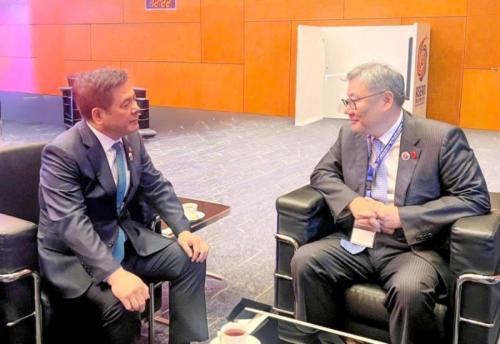European businesses in Vietnam turn green ambitions into action
EuroCham's survey indicates that approximately one-quarter of European businesses in Vietnam have implemented green initiatives over the past two years.
The Q3 2025 Business Confidence Index (BCI) survey, released on October 14 by the European Chamber of Commerce in Vietnam (EuroCham), indicates that European businesses in Vietnam are increasingly turning the vision of green transformation into reality.
Specifically, half of the surveyed businesses reported awareness of the European Green Deal, though only 7% are directly involved in related mechanisms. Awareness of Vietnam's National Green Growth Strategy for the 2021-2030 period reached 43%, while approximately one-fifth of businesses are participating in and benefiting from support programs related to energy efficiency and innovation.
Meanwhile, the EU Deforestation Regulation (EUDR), expected to come into effect in 2026, is prompting businesses to review their supply chains. Over one-third of companies are currently researching compliance requirements, and 11% have already begun adjusting their purchasing processes to align with EU sustainability standards. This shift could reshape global value chains in manufacturing, agriculture, and forestry towards greater transparency and traceability.
At the enterprise level, the survey indicates that approximately one-quarter of European businesses in Vietnam have implemented green initiatives over the past two years.
ESG (Environmental, Social, and Governance) reporting and certification activities are the most widely and comprehensively implemented, followed by energy efficiency upgrades through digital monitoring systems and waste reduction programs. Circular economy models are also expanding, with 37% of businesses having piloted projects to reduce or offset carbon emissions.
Nevertheless, the adoption of renewable energy remains a significant challenge due to inadequate grid infrastructure and difficulties in accessing direct power purchase agreements (DPPA) mechanisms.
Despite these existing barriers, the benefits gained are very clear. According to the survey, 42% of businesses noted improved customer trust, market access, and brand value; 39% observed increased operational efficiency through reduced energy consumption; and 32% achieved specific financial benefits.
Mr. Bruno Jaspaert, Chairman of EuroCham Vietnam, emphasized that sustainable development is no longer just a compliance criterion but is becoming a new competitive driver for businesses.
This shift in mindset reflects a shared priority between the EU and Vietnam: ensuring that businesses integrate sustainable development strategies into their business models, so that growth does not come at the expense of Earth's finite resources, he said.
Source: An Chi
Photo: Illustrative photo





